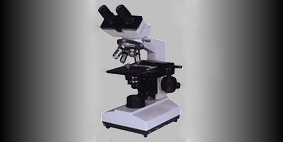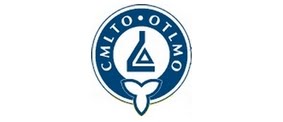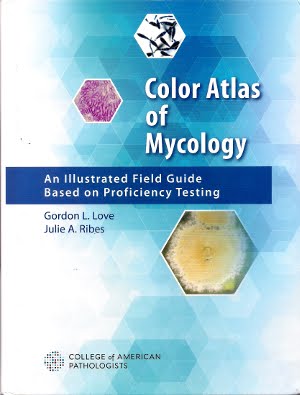Rhizopus is a cosmopolitan filamentous fungus found in soil, as a saprobe growing on mature fruits & vegetables and as mold found on old bread.
The genus Rhizopus consists of a number of species exhibiting many common features. An adhesive tape preparation(1) stained with Lactophenol Cotton Blue for contrast is shown below.
 Asexual sporaniospores are borne from a sporangium located upon the collumella at the apical end of the sporangiophore. Rhizoids, for which the genus is named, appear as a root-like structure extending near the stolon hyphal base. Hyphae are aseptate or sparsely septate.
Asexual sporaniospores are borne from a sporangium located upon the collumella at the apical end of the sporangiophore. Rhizoids, for which the genus is named, appear as a root-like structure extending near the stolon hyphal base. Hyphae are aseptate or sparsely septate.Macroscopically, Rhizopus is a rapidly growing fungus that can fill a petrie dish with fluffy, cotton-candy like growth in under 5 days. Growth is generally whitish in colour which can turn brown with age as a result of the maturation of the sporangiospores within the sporangium.
Rhizopus is grouped with other fungi of the Zygomycota phylum which cause similar infections commonly referred to as zygomycosis. This opportunistic infection can invade a wide variety of sites/tissues and occurs most commonly in diabetics suffering ketoacidosis and in immunocompromised individuals.
Treatment of zygomycosis may require surgical intervention; debridement of necrotic tissue where possible followed by treatment with Amphotericin B.
 Click on photos to enlarge for better viewing.
Click on photos to enlarge for better viewing. Pigmented Rhizoid & Sporangiophore seen.
Pigmented Rhizoid & Sporangiophore seen.After spore release the apophyses and columella often collapse to form an umbrella-like structure as seen at the end of two of the sporangiophores above.
 Mature sporangium releasing sporangiospores
Mature sporangium releasing sporangiospores(click on photos to enlarge for better viewing)
 Ditto (rhizoid at base)
Ditto (rhizoid at base) Sporangium with Sporangiospores at end of Sporangiophore
Sporangium with Sporangiospores at end of Sporangiophore(click on photo to enlarge for better viewing)
 Inset (top) Sporangium releasing sporaniospores
Inset (top) Sporangium releasing sporaniosporesInset (bottom) Sporangiospores (48hrs X400)
 Intended as Rhizopus Wallpaper (1024 X 768) when posted.
Intended as Rhizopus Wallpaper (1024 X 768) when posted.
.jpg)























